Tommaso Zugno
Use Cases for Terahertz Communications: An Industrial Perspective
Jan 07, 2025



Abstract:Thanks to the vast amount of available resources and unique propagation properties, terahertz (THz) frequency bands are viewed as a key enabler for achieving ultrahigh communication performance and precise sensing capabilities in future wireless systems. Recently, the European Telecommunications Standards Institute (ETSI) initiated an Industry Specification Group (ISG) on THz which aims at establishing the technical foundation for subsequent standardization of this technology, which is pivotal for its successful integration into future networks. Starting from the work recently finalized within this group, this paper provides an industrial perspective on potential use cases and frequency bands of interest for THz communication systems. We first identify promising frequency bands in the 100 GHz - 1 THz range, offering over 500 GHz of available spectrum that can be exploited to unlock the full potential of THz communications. Then, we present key use cases and application areas for THz communications, emphasizing the role of this technology and its advantages over other frequency bands. We discuss their target requirements and show that some applications demand for multi-Tbps data rates, latency below 0.5 ms, and sensing accuracy down to 0.5 cm. Additionally, we identify the main deployment scenarios and outline other enabling technologies crucial for overcoming the challenges faced by THz system. Finally, we summarize the past and ongoing standardization efforts focusing on THz communications, while also providing an outlook towards the inclusion of this technology as an integral part of the future sixth generation (6G) and beyond communication networks.
Programmable and Customized Intelligence for Traffic Steering in 5G Networks Using Open RAN Architectures
Oct 06, 2022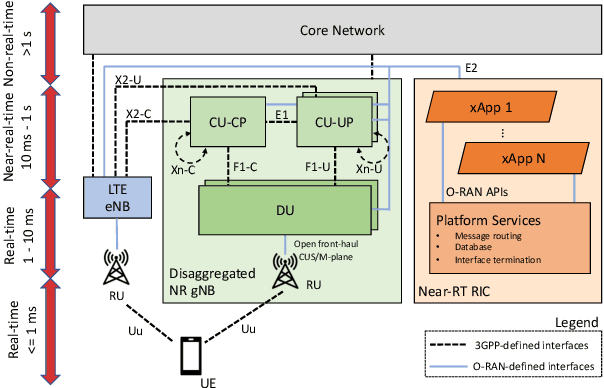
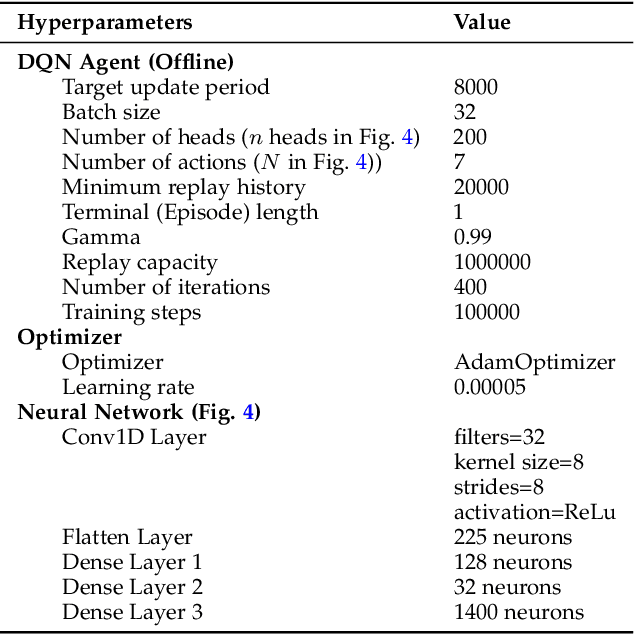
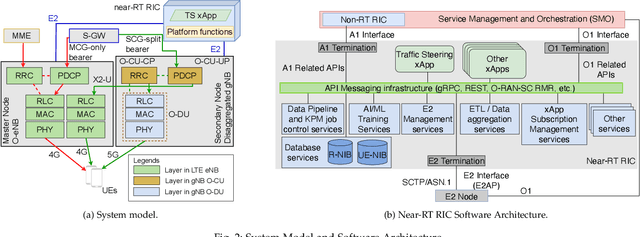
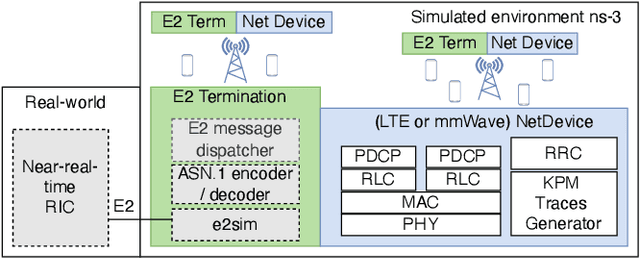
Abstract:5G and beyond mobile networks will support heterogeneous use cases at an unprecedented scale, thus demanding automated control and optimization of network functionalities customized to the needs of individual users. Such fine-grained control of the Radio Access Network (RAN) is not possible with the current cellular architecture. To fill this gap, the Open RAN paradigm and its specification introduce an open architecture with abstractions that enable closed-loop control and provide data-driven, and intelligent optimization of the RAN at the user level. This is obtained through custom RAN control applications (i.e., xApps) deployed on near-real-time RAN Intelligent Controller (near-RT RIC) at the edge of the network. Despite these premises, as of today the research community lacks a sandbox to build data-driven xApps, and create large-scale datasets for effective AI training. In this paper, we address this by introducing ns-O-RAN, a software framework that integrates a real-world, production-grade near-RT RIC with a 3GPP-based simulated environment on ns-3, enabling the development of xApps and automated large-scale data collection and testing of Deep Reinforcement Learning-driven control policies for the optimization at the user-level. In addition, we propose the first user-specific O-RAN Traffic Steering (TS) intelligent handover framework. It uses Random Ensemble Mixture, combined with a state-of-the-art Convolutional Neural Network architecture, to optimally assign a serving base station to each user in the network. Our TS xApp, trained with more than 40 million data points collected by ns-O-RAN, runs on the near-RT RIC and controls its base stations. We evaluate the performance on a large-scale deployment, showing that the xApp-based handover improves throughput and spectral efficiency by an average of 50% over traditional handover heuristics, with less mobility overhead.
Artificial Intelligence in Vehicular Wireless Networks: A Case Study Using ns-3
Mar 10, 2022
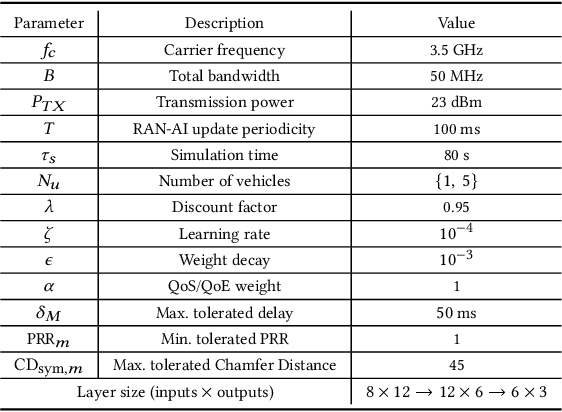


Abstract:Artificial intelligence (AI) techniques have emerged as a powerful approach to make wireless networks more efficient and adaptable. In this paper we present an ns-3 simulation framework, able to implement AI algorithms for the optimization of wireless networks. Our pipeline consists of: (i) a new geometry-based mobility-dependent channel model for V2X; (ii) all the layers of a 5G-NR-compliant protocol stack, based on the ns3-mmwave module; (iii) a new application to simulate V2X data transmission, and (iv) a new intelligent entity for the control of the network via AI. Thanks to its flexible and modular design, researchers can use this tool to implement, train, and evaluate their own algorithms in a realistic and controlled environment. We test the behavior of our framework in a Predictive Quality of Service (PQoS) scenario, where AI functionalities are implemented using Reinforcement Learning (RL), and demonstrate that it promotes better network optimization compared to baseline solutions that do not implement AI.
A Reinforcement Learning Framework for PQoS in a Teleoperated Driving Scenario
Feb 04, 2022
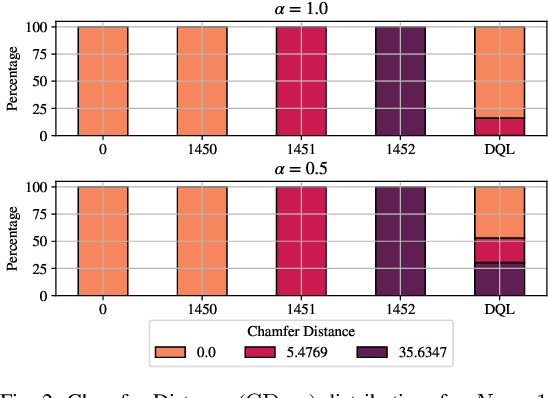
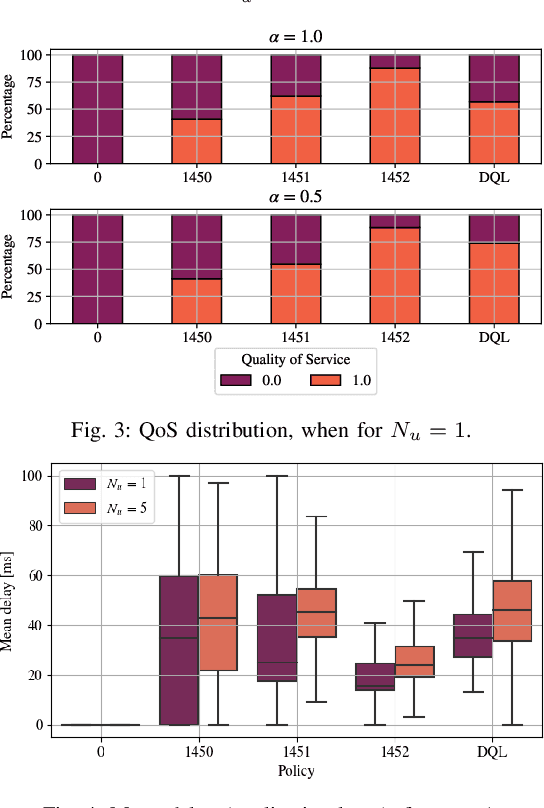
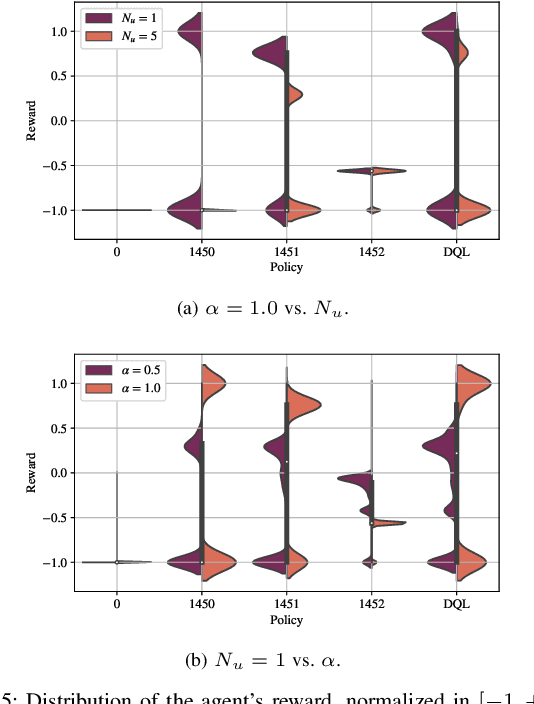
Abstract:In recent years, autonomous networks have been designed with Predictive Quality of Service (PQoS) in mind, as a means for applications operating in the industrial and/or automotive sectors to predict unanticipated Quality of Service (QoS) changes and react accordingly. In this context, Reinforcement Learning (RL) has come out as a promising approach to perform accurate predictions, and optimize the efficiency and adaptability of wireless networks. Along these lines, in this paper we propose the design of a new entity, implemented at the RAN-level that, with the support of an RL framework, implements PQoS functionalities. Specifically, we focus on the design of the reward function of the learning agent, able to convert QoS estimates into appropriate countermeasures if QoS requirements are not satisfied. We demonstrate via ns-3 simulations that our approach achieves the best trade-off in terms of QoS and Quality of Experience (QoE) performance of end users in a teleoperated-driving-like scenario, compared to other baseline solutions.
Can 5G NR-Light Operate at Millimeter Waves? Design Guidelines for Mid-Market IoT Use Cases
Sep 30, 2021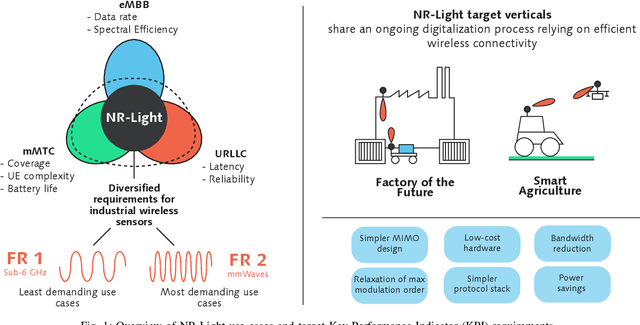
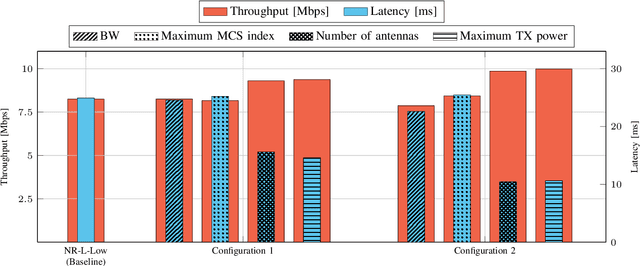
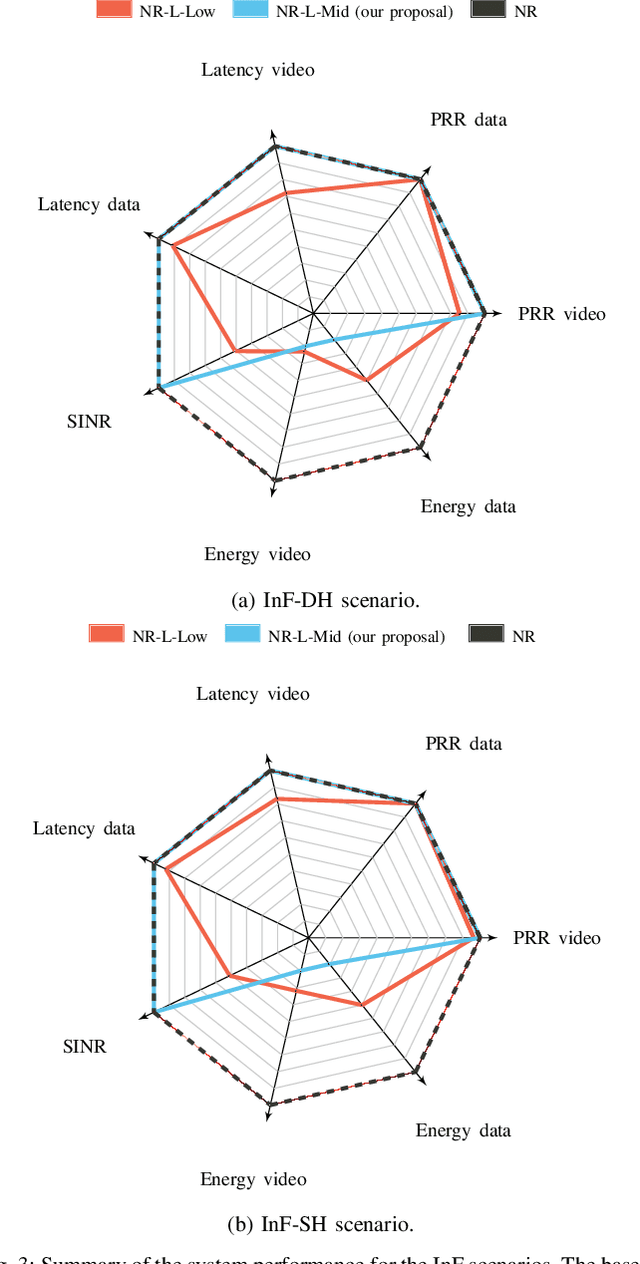
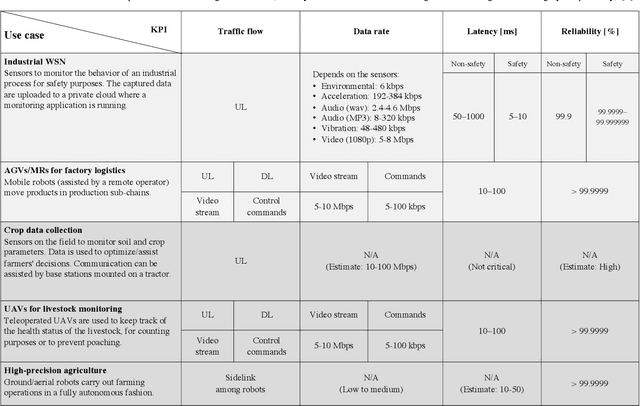
Abstract:5th generation (5G) systems have been designed with three main objectives in mind: increasing throughput, reducing latency, and enabling reliable communications. To meet these (often conflicting) constraints, in 2019 the 3GPP released a set of specifications for 5G NR, one of the main innovations being the support for communications in the millimeter wave (mmWave) bands. However, how to implement lower complexity, energy efficient, mid-market Internet of Things (IoT) applications is still an on-going investigation, currently led by the 3GPP which is extending the NR standard with NR-Light specifications to support devices with reduced capabilities (REDCAP). In this paper we investigate the feasibility of operating such devices at mmWaves, in view of the requirements and expectations for NR- Light applications in terms of cost and complexity, throughput, and latency. Contributions of this paper are threefold. First, we il- lustrate the potential of mmWave communication for mid-market IoT use cases. Then, we highlight and motivate the design of an NR-Light candidate interface derived from NR by a selection of features. Finally, we demonstrate the technical soundness of this interface in an industrial IoT setup via simulations.
 Add to Chrome
Add to Chrome Add to Firefox
Add to Firefox Add to Edge
Add to Edge